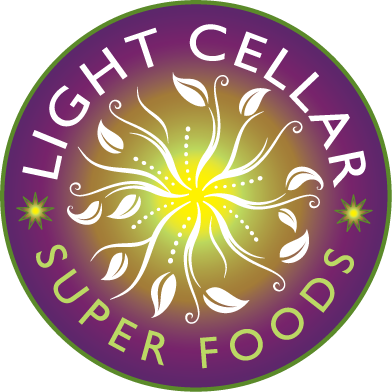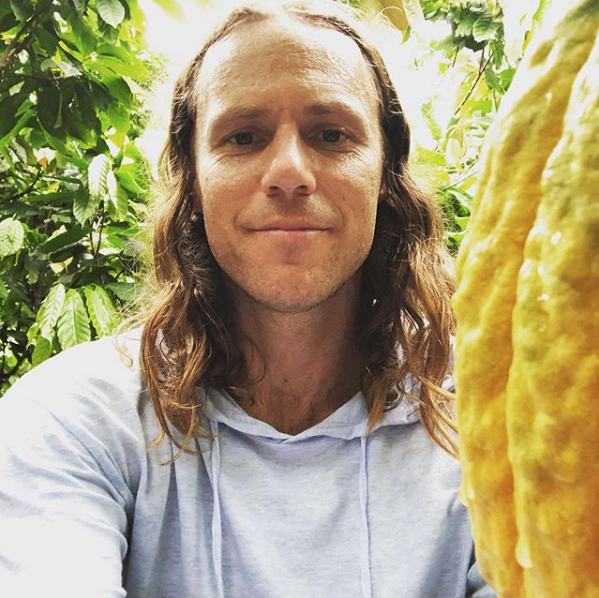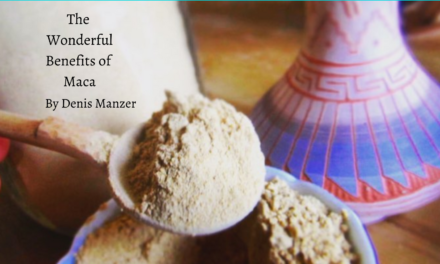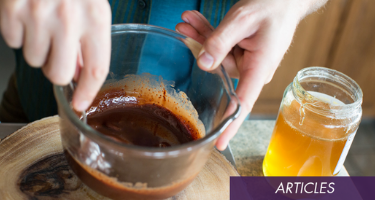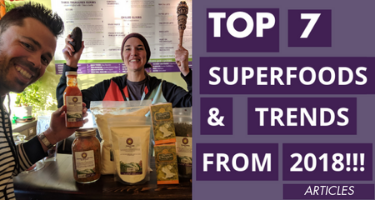You are about to go on a journey to the source of chocolate…
To see cacao in ways you likely haven’t ever before.
In this post you’ll go from tree, to flower, to fruit, to bean so you can see cacao in all its forms, learning about the tree, pod, fruit, beans, fermentation and drying of cacao…
In part 2 I’ll share about cracking, winnowing, grinding, tempering and moulding and all the other processes that go into creating delicious chocolate.
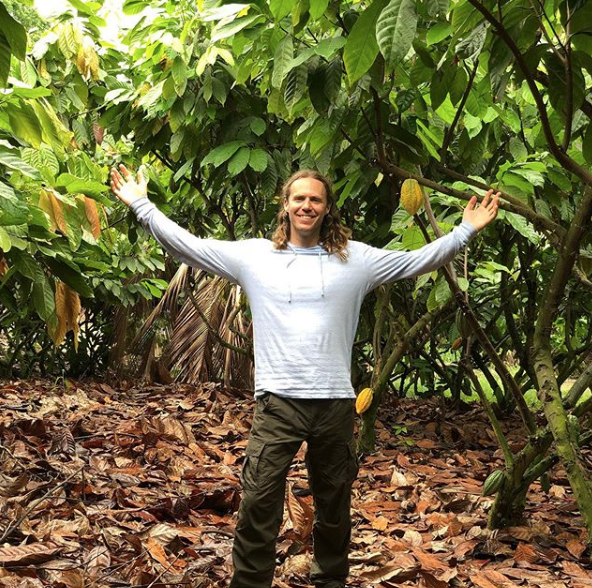
Here is what a forest of chocolate trees looks like!
A dream come true to stand amongst these trees.
Theobroma cacao – The Food of the Gods
This photo was taken during a trip to Ecuador last year in January 2019 and at a particular farm had more than 72 distinct heirloom varieties of cacao growing there.
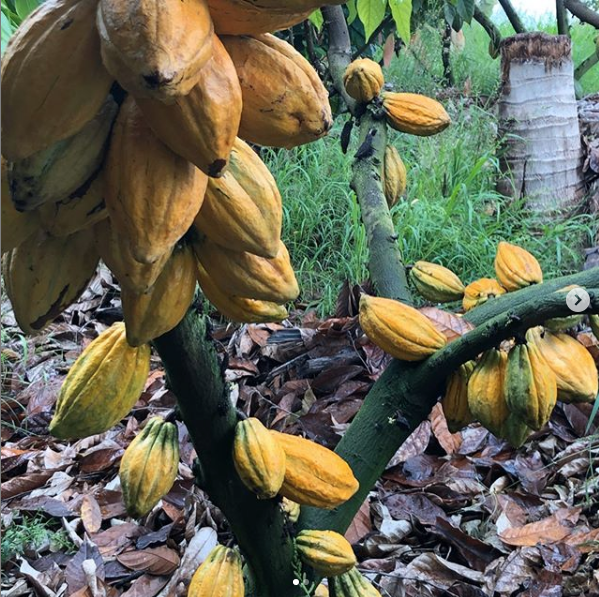
The Cacao Tree
Unique among fruit trees in that its fruit grows from the trunk of the tree versus out on the branches. This phenomenon is known as cauliflory and it allows insect pollinators without wings to climb the trunk and access the flowers to pollinate them.
Though Cacao has only one major and primary pollinator – if it is scarce then it must rely on other pollinators who will climb the trunk to find the flowers.
Pictured here is an heirloom variety of cacao that is absolutely loaded with cacao fruit.
Our host specifically sought out this tree to show us how laden a tree can get with pods.
Did you know that the pollination rate is much higher in heirloom varieties of cacao versus the industrial hybrids?
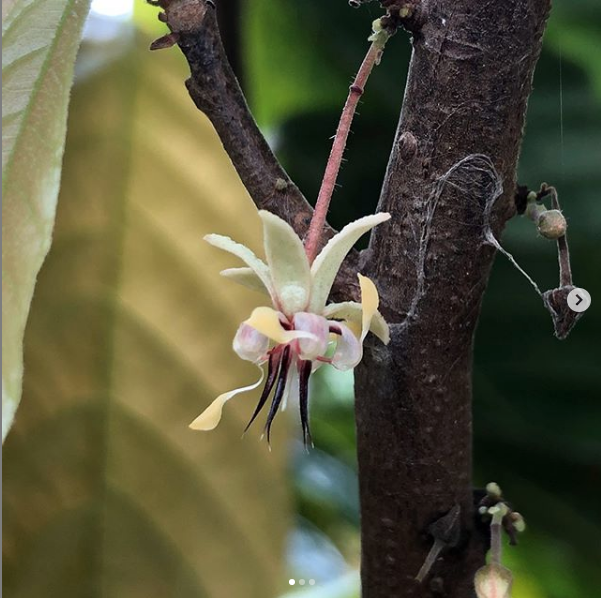
Cacao Flower Power
The beauty and wonder of chocolate goes beyond just bar…
It all begins as a tiny orchid-like flower, which grows off the side of the tree.
Do you know what creature pollinates cacao and is therefore responsible for chocolate!?!
There is 1 type of fly that pollinates the incredibly tiny & complex reproductive structure of cacao…
It’s an insect we all love to hate because they bite, and when they do, it can hurt! And to make it worse sometimes they come in swarms.
This is the midge, or No See Ums…
Despite having both male and female reproductive organs on the same plant, cacao is entirely dependent on having the midge fertilize it.
So before we go cursing these little ankle biting insects, let’s remember without them – no chocolate!!
We have to cheer on these insects as much as we can, because the pollination rate for cacao is a shockingly low 0.3%
Midges thrive best in a shaded forest environment with lots of leaf debris on the ground to lay eggs in.
And the here is the real kicker…
If you have been following us just recently or for a while – we often make mention about the heirloom genetics of chocolate and how this matters for not only taste, but health of ourselves and ecology…
Here’s one more reason to choose non-industrial cacao…
The wild and heirloom cacao flowers have more than 75 distinct aroma compounds, whereas commercially cultivated hybrid cacao that is 90% of chocolate, has only a few…
This lack of complexity in just the flower alone, I believe reflects a superficial character in both nutrition and flavour and ultimately vitality of tree, ecosystem and end product – chocolate
The pollination rate is much higher in wild and heirloom cacao!
All the more reason to enjoy really good chocolate.
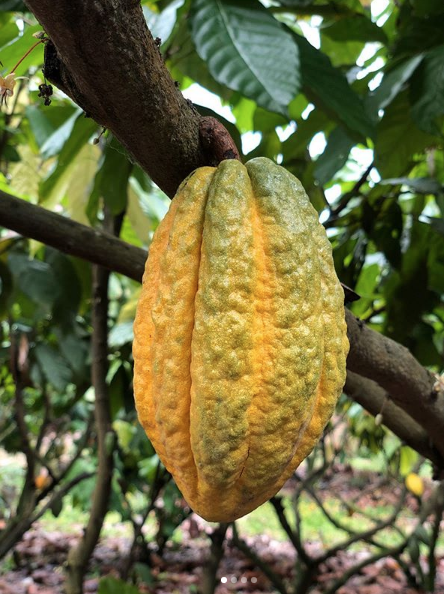
Theobroma Cacao produces a fruit pod that comes in a variety of shapes and colours depending on the genetic.
Many heirloom varieties start green and ripen to yellow.
And at least in Ecuador most of the hybrids are a purple-magenta colour and is one easy visual clue to tell the prized Arriba Nacional (yellow) from the industrial hybrid CCN-51 (red)
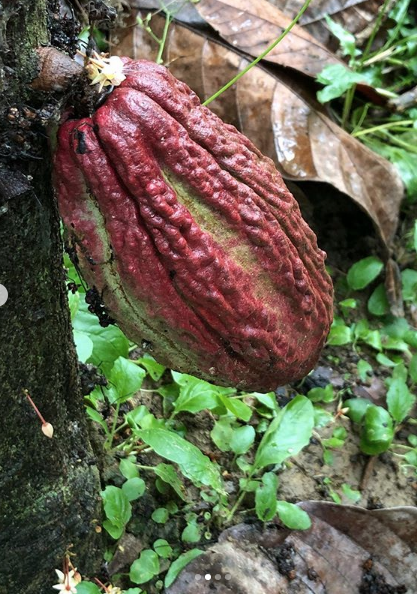
Each cacao variety is very different, astonishingly so, and when you taste them, each has its own distinct flavour characteristics.
One plantation we went to had more than 72 different varieties growing and we got to experience that difference on our tongues.
It was incredible to experience and I had to keep in mind that this was purely just from variety alone…
As other factors like Terroir, Fermentation, Drying, etc which can also influence flavour, were not playing a role in this case as all these other factors were maintained the same.
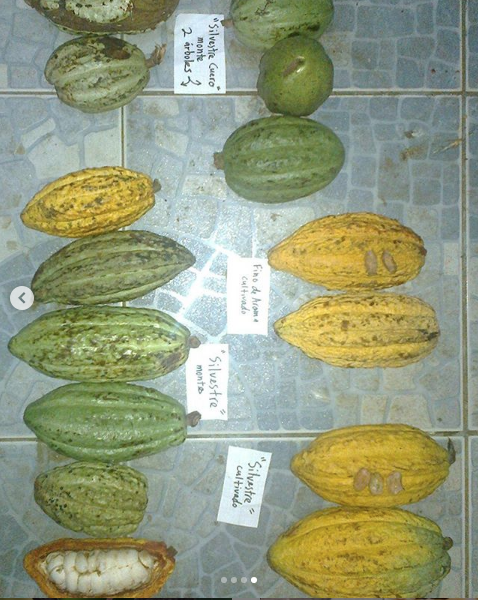
Picture above is a view into something completely different…
The picture of these pods were sent to me from someone I know and wanted to visit deep in the Amazon
Timing didn’t allow us that trip to travel the 17hrs by bumpy road it would have taken to get to where he is harvesting a mix of cultivated and truly wild jungle cacao.
You will likely almost never see these beans available commercially- the places they grow too remote, and the trees too tall and awkward to profitability harvest.
However he did send me some beans and the flavour was incredible – unlike what I had tasted in other Cacao – and I felt was a true reflection of the deep and complex nature of the Amazon rainforest.
Man I love chocolate!
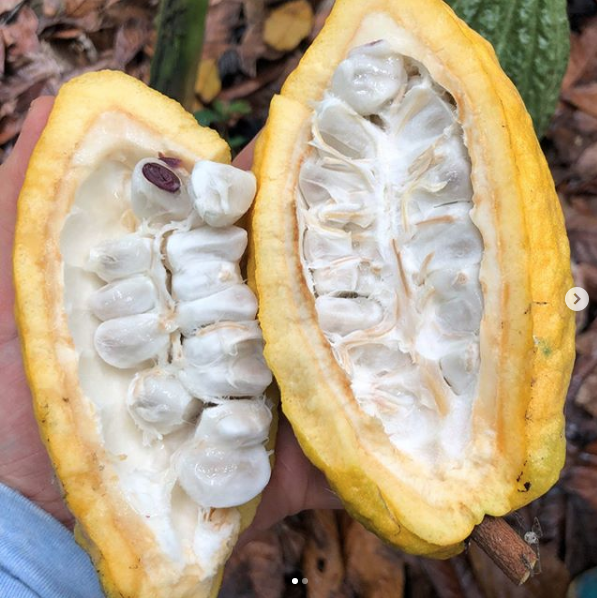
Inside each cacao pod are the cacao beans which are covered in a sweet delicious fruit
This is Cacao fruit.
Which can really only be enjoyed as a sweet tropical treat wherever you find fresh cacao growing – you rarely ever come across it outside of the ‘cocoa belt’ which is the narrow band within 20degrees North and 20degrees South of the Equator where cacao grows.
The fruit quite simply doesn’t transport well and is primarily used in the Fermentation of the cacao beans – More on that process in a future post as we work our way through this cacao series.
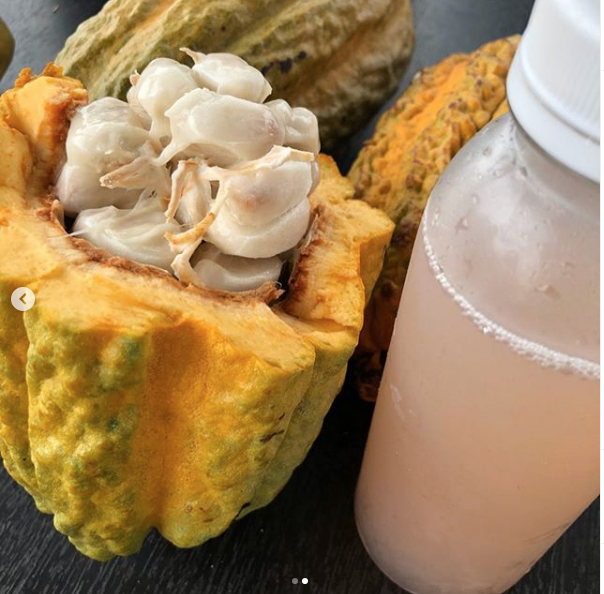
The fruit or it can also be described as a Mucilage, is sweet, slimy and has a tropical zest with a flavour not too dissimilar to a cross between pineapple and mangosteen… though honestly is very hard to describe the flavour.
One of the very best fresh fruit juices I’ve ever had is cacao fruit juice – pure heaven, almost as good as chocolate…
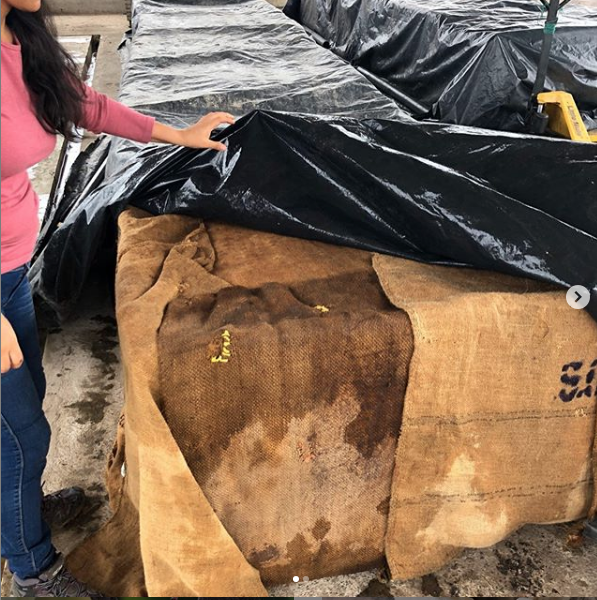
Chocolate is a Fermented Food And in this post you will learn about the Fermentation of cacao
We recently just featured the cacao pod inside of which is the cacao beans that are covered in fruit
It is this sweet fruit that initiates and ferments the cacao beans ✨
Most of the time Fermentation is done in raised boxes but can also just be done on the ground in banana leaves.
Fermentation carries on for a range of anywhere from 3-7days. The beans are turned and aerated at least once but often more during that time.
Initially, it is yeast that digest the sugars, turning them into alcohol and then acetic acid bacteria transform that into acetic acid.
Now you might ask – why ferment cacao?
The beans endure the heat, acidity and enzymatic effects and are transformed in both colour and flavour as a result.
Fermentation is actually a very key step in chocolate making and a new and developing frontier for chocolate makers to begin to customize the process to develop new and novel flavours.
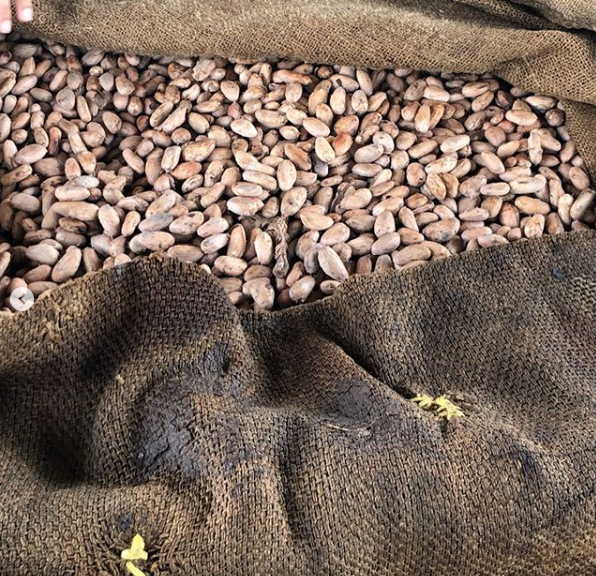
Some chocolate makers are even doing a double fermentation and adding in other tropical fruits to infuse their own flavour into the cacao.
The plantation we visited is working with makers to customize the fermentation to get the exact right flavour profile they want with the beans.
Most commercial chocolate does not have this level of attention given to it and the quality of the chocolate suffers.
All the more reason to invest in good quality chocolate from true craft chocolate makers who are passionate about the art and process.
Only other point to note regarding fermentation is that it actually makes the beans more digestible – removing anti-nutrients like physic avid which most nuts and seeds have.
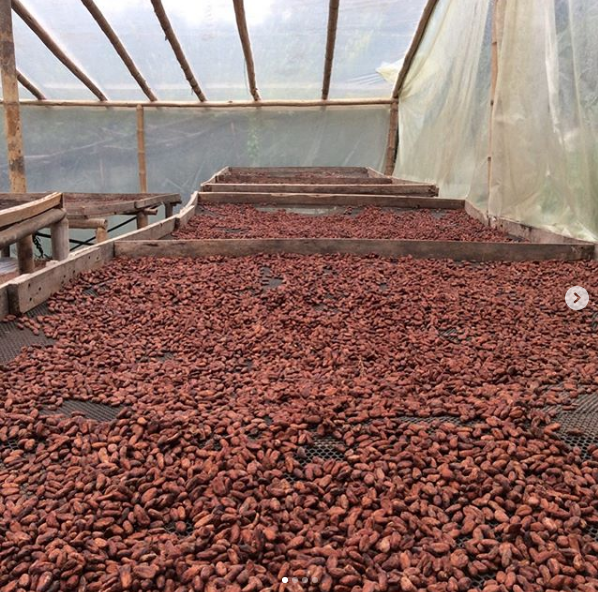
Drying Cacao
Post Fermentation, cacao beans need to be dried to a specific moisture content and though the process may seem straightforward there is a big variance in where and how this is actually done – all of which affect the quality and flavour of the end result – Chocolate.
This is yet another line between small scale artisan craft chocolate producers and large scale industrial chocolate…
The drying of cacao beans must be done properly to achieve the right flavour and to keep the beans from developing mold and being exposed to other contaminants.
Let me explain…
First it must be a slow dry. If beans are dried too quickly then too much of the naturally occurring acetic acid remains resulting in very acidic, vinegary tasting beans. Through a slow air dry, about 2-3weeks, much of the acetic acid is able to volatilize off.
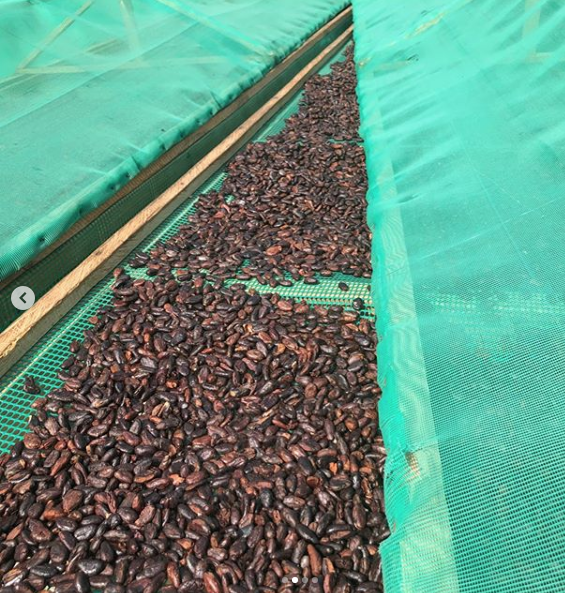
The beans are best dried with air flow above and below them as seen by the type of suppliers we work with in the first and second picture. This creates a nice even drying process and also reduces the amount of mold that may form on the beans. And it reduces exposure to all kinds of cross contamination that can come from more conventional methods of drying as seen in the next couple pictures which I don’t think I need to go into the various less desirable scenarios that result from drying cacao on the highway!
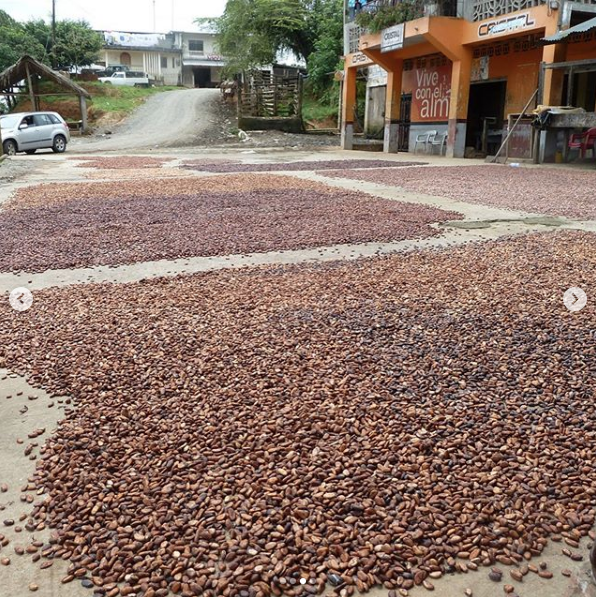
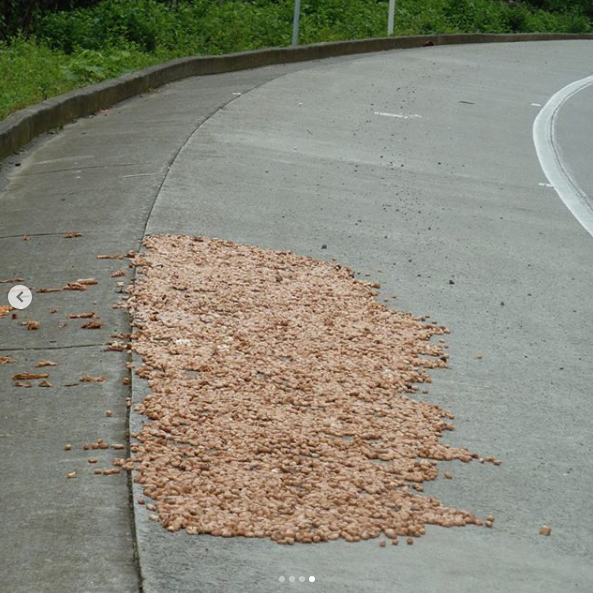
Fun fact that in industry terms right up until this moment they are called cacao beans… As soon as you roast and or begin to process cacao in any other way they become known as cocoa beans…
In part 2 we will get into the processing of cacao beans and what it takes to make them into chocolate.
